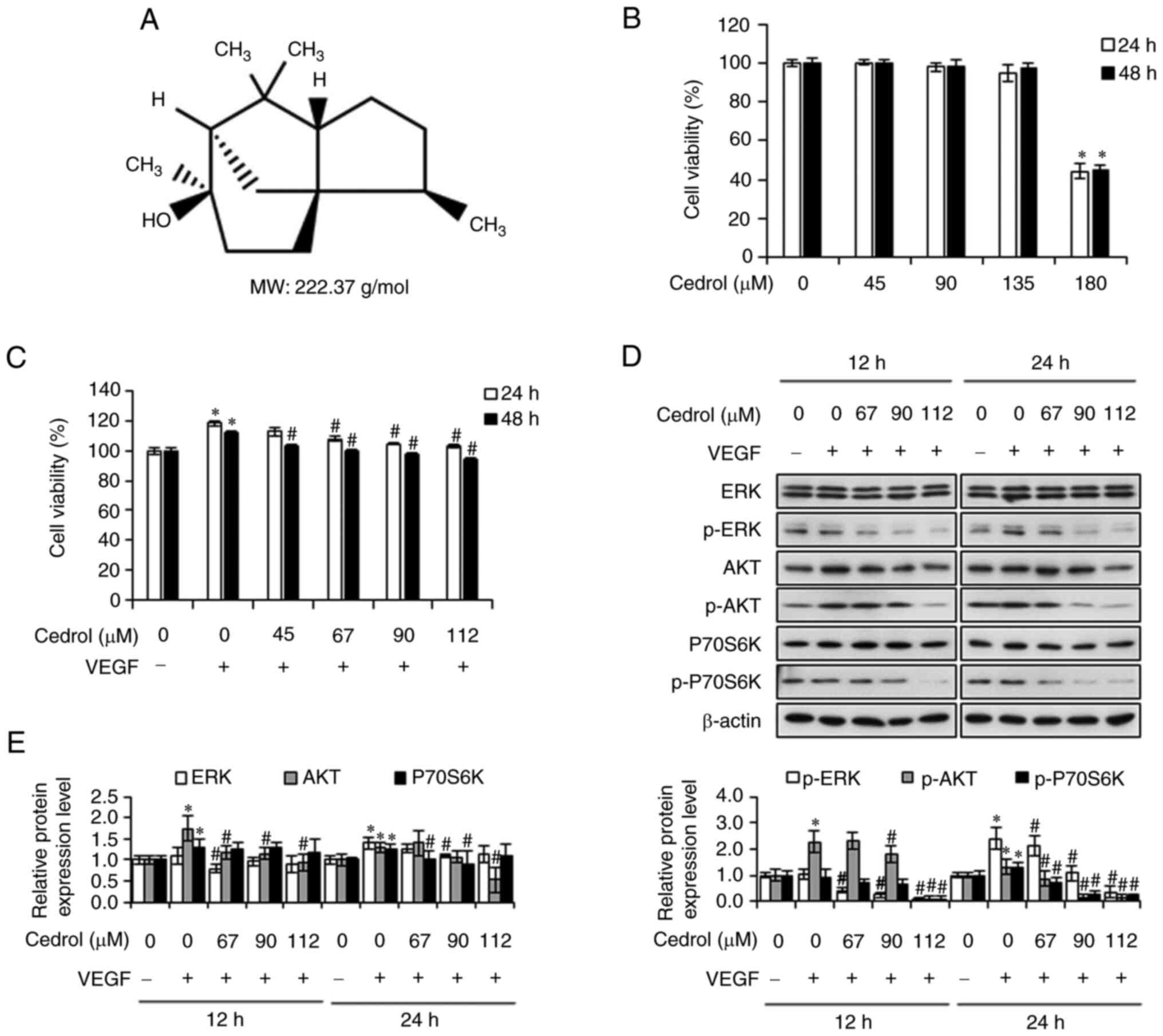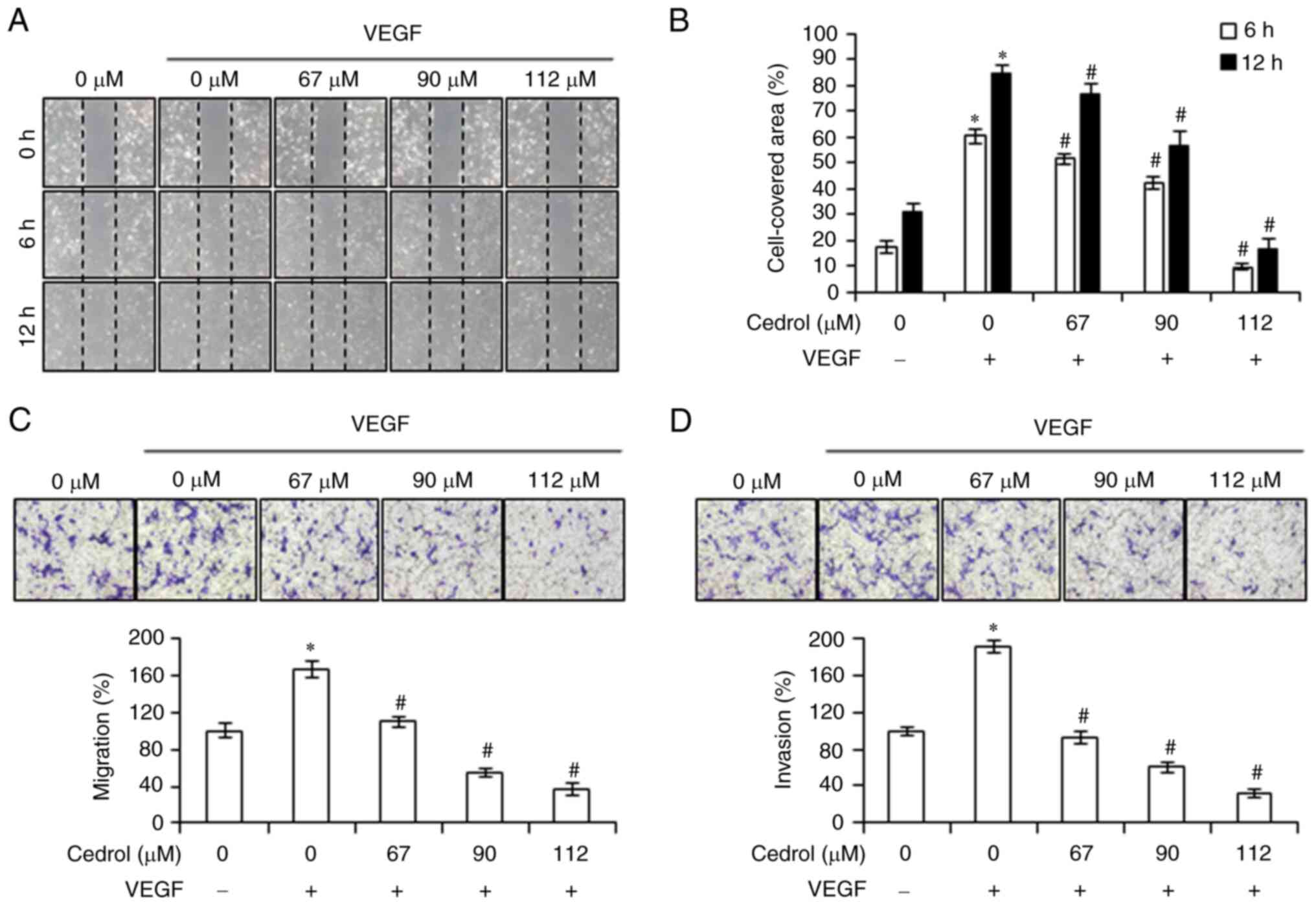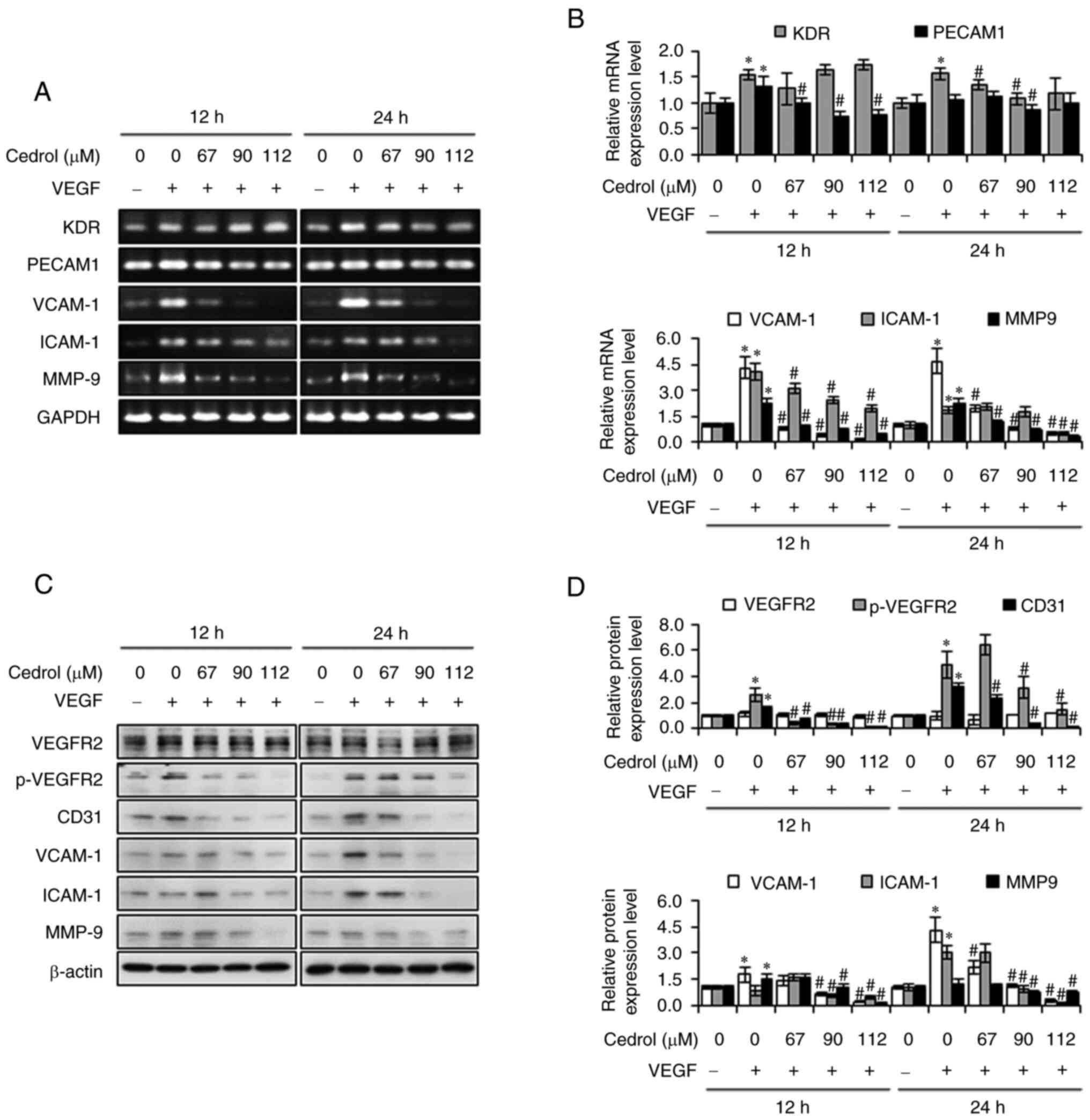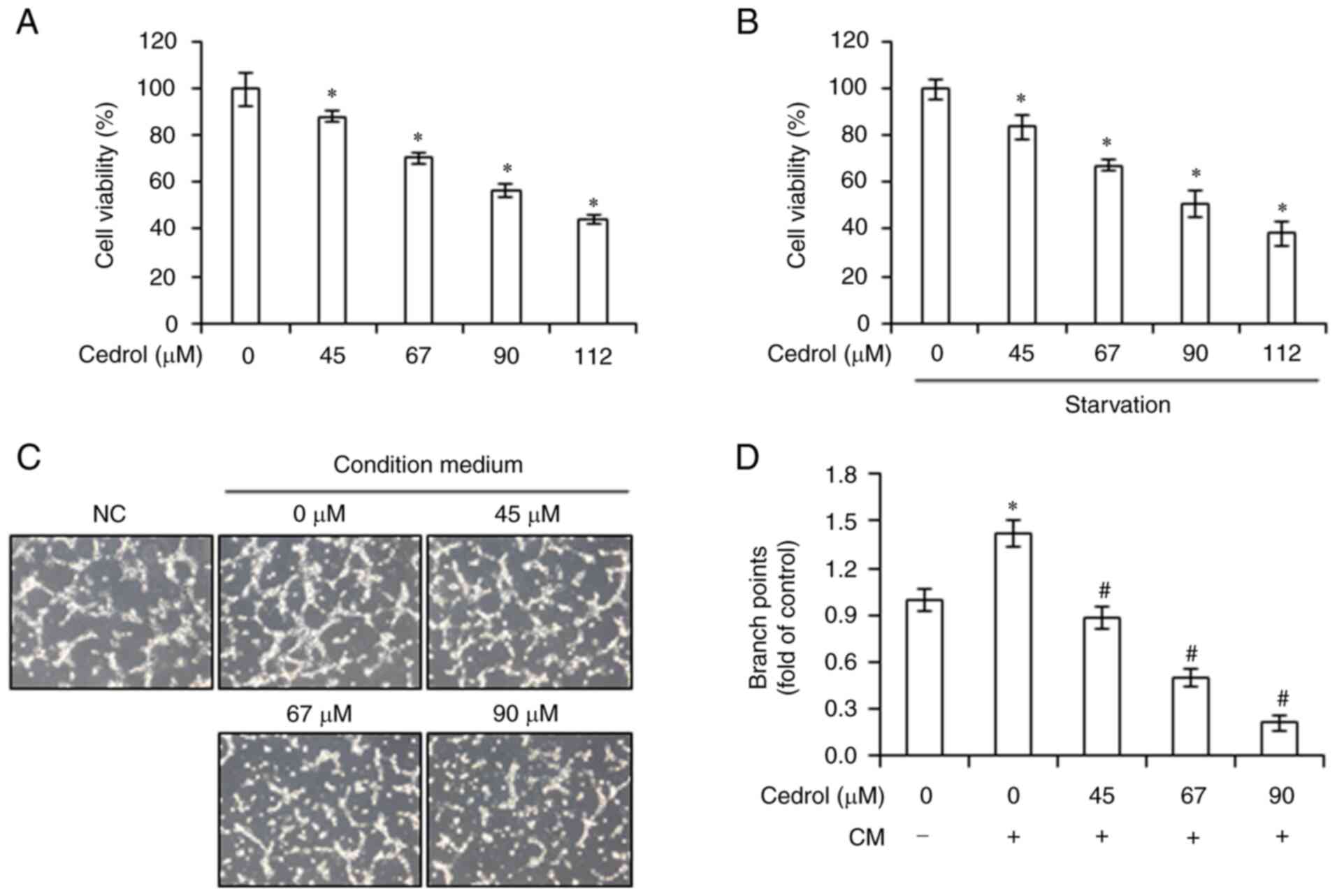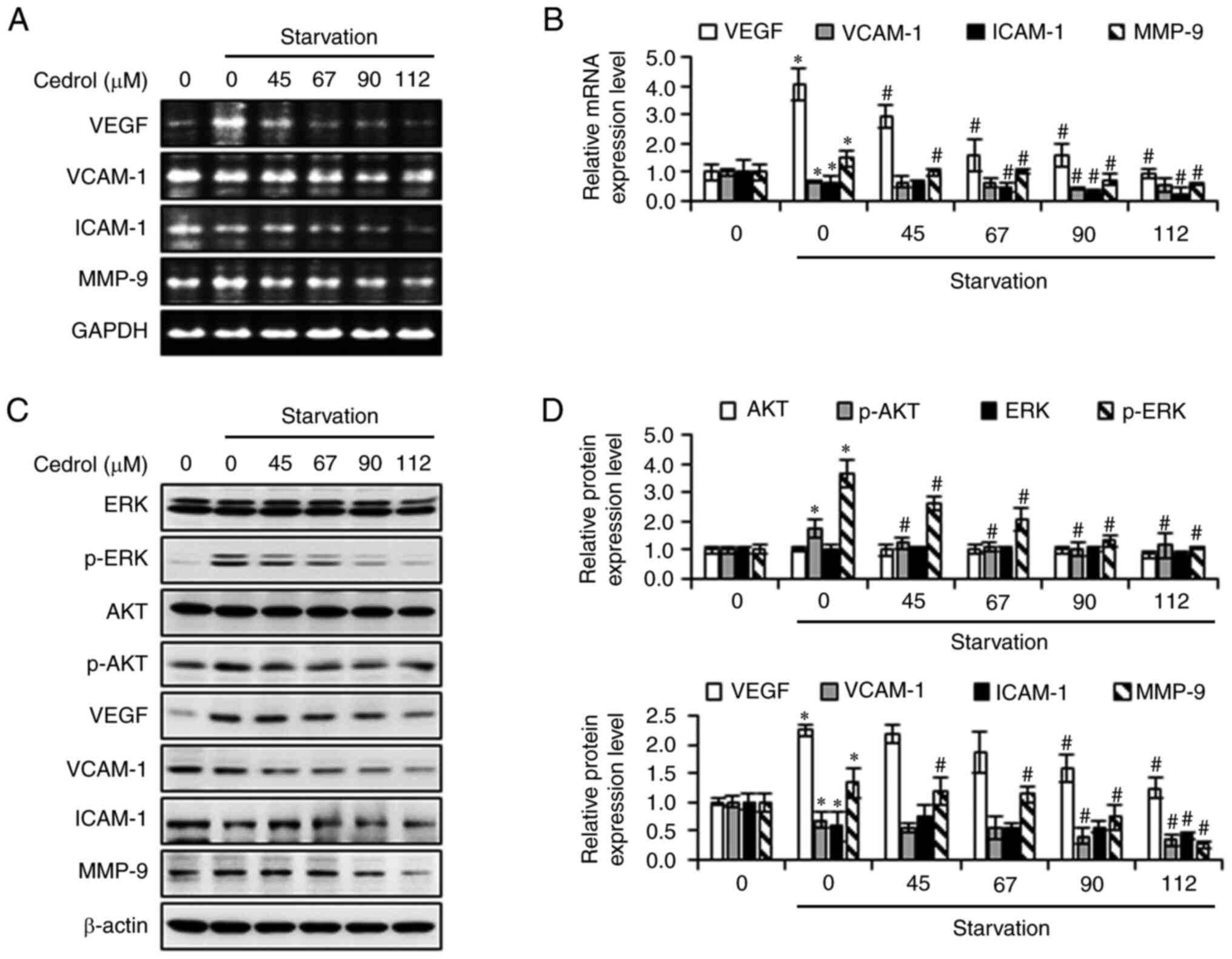|
1
|
Tahergorabi Z and Khazaei M: A review on
angiogenesis and its assays. Iran J Basic Med Sci. 15:1110–1126.
2012.PubMed/NCBI
|
|
2
|
Welch DR and Hurst DR: Defining the
hallmarks of metastasis. Cancer Res. 79:3011–3027. 2019. View Article : Google Scholar : PubMed/NCBI
|
|
3
|
Kroemer G and Pouyssegur J: Tumor cell
metabolism: Cancer's Achilles' heel. Cancer Cell. 13:472–482. 2008.
View Article : Google Scholar : PubMed/NCBI
|
|
4
|
Ghalehbandi S, Yuzugulen J, Pranjol MZI
and Pourgholami MH: The role of VEGF in cancer-induced angiogenesis
and research progress of drugs targeting VEGF. Eur J Pharmacol.
949:1755862023. View Article : Google Scholar : PubMed/NCBI
|
|
5
|
Niu G and Chen X: Vascular endothelial
growth factor as an anti-angiogenic target for cancer therapy. Curr
Drug Targets. 11:1000–1017. 2010. View Article : Google Scholar : PubMed/NCBI
|
|
6
|
Sharma PS, Sharma R and Tyagi T:
VEGF/VEGFR pathway inhibitors as anti-angiogenic agents: Present
and future. Curr Cancer Drug Targets. 11:624–653. 2011. View Article : Google Scholar : PubMed/NCBI
|
|
7
|
Holmes K, Roberts OL, Thomas AM and Cross
MJ: Vascular endothelial growth factor receptor-2: Structure,
function, intracellular signalling and therapeutic inhibition. Cell
Signal. 19:2003–2012. 2007. View Article : Google Scholar : PubMed/NCBI
|
|
8
|
Kim I, Moon SO, Kim SH, Kim HJ, Koh YS and
Koh GY: Vascular endothelial growth factor expression of
intercellular adhesion molecule 1 (ICAM-1), vascular cell adhesion
molecule 1 (VCAM-1), and E-selectin through nuclear factor-kappa B
activation in endothelial cells. J Biol Chem. 276:7614–7620. 2001.
View Article : Google Scholar : PubMed/NCBI
|
|
9
|
Turunen MP and Yla-Herttuala S: Epigenetic
regulation of key vascular genes and growth factors. Cardiovasc
Res. 90:441–446. 2011. View Article : Google Scholar : PubMed/NCBI
|
|
10
|
Ostrom QT, Cioffi G, Gittleman H, Patil N,
Waite K, Kruchko C and Barnholtz-Sloan JS: CBTRUS statistical
report: Primary brain and other central nervous system tumors
diagnosed in the United States in 2012-2016. Neurooncology. 21
(Suppl 5):v1–v100. 2019.
|
|
11
|
Chen B, Chen C, Zhang Y and Xu J: Recent
incidence trend of elderly patients with glioblastoma in the United
States, 2000-2017. BMC Cancer. 21:542021. View Article : Google Scholar : PubMed/NCBI
|
|
12
|
Krex D, Klink B, Hartmann C, von Deimling
A, Pietsch T, Simon M, Sabel M, Steinbach JP, Heese O, Reifenberger
G, et al: Long-term survival with glioblastoma multiforme. Brain.
130:2596–2606. 2007. View Article : Google Scholar : PubMed/NCBI
|
|
13
|
Groblewska M and Mroczko B: Pro- and
antiangiogenic factors in gliomas: Implications for novel
therapeutic possibilities. Int J Mol Sci. 22:61262021. View Article : Google Scholar : PubMed/NCBI
|
|
14
|
Chen W, He D, Li Z, Zhang X, Pan D and
Chen G: Overexpression of vascular endothelial growth factor
indicates poor outcomes of glioma: A systematic review and
meta-analysis. Int J Clin Exp Med. 8:8709–8719. 2015.PubMed/NCBI
|
|
15
|
Luo Y, Hou WT, Zeng L, Li ZP, Ge W, Yi C,
Kang JP, Li WM, Wang F, Wu DB, et al: Progress in the study of
markers related to glioma prognosis. Eur Rev Med Pharmacol Sci.
24:7690–7697. 2020.PubMed/NCBI
|
|
16
|
Mojay G: The aromatic and acupressure
treatment of common musculoskeletal disorders: An Oriental medicine
approach. Int J Aromatherapy. 14:81–88. 2004. View Article : Google Scholar
|
|
17
|
Huang CY, Chien JH, Chang KF, Hsiao CY,
Huang YC, Chen YT, Hsu MY, Hsieh MC and Tsai NM: Cedrus atlantica
extract exerts antiproliferative effect on colorectal cancer
through the induction of cell cycle arrest and apoptosis. Food Sci
Nutr. 10:1638–1648. 2022. View Article : Google Scholar : PubMed/NCBI
|
|
18
|
Chang KF, Chang JT, Huang XF, Huang YC, Li
CY, Weng JC, Hsiao CY, Hsu HJ and Tsai NM: Cedrus atlantica extract
suppress glioblastoma growth through promotion of genotoxicity and
apoptosis: In vitro and in vivo studies. Int J Med Sci.
18:2417–2430. 2021. View Article : Google Scholar : PubMed/NCBI
|
|
19
|
Dakir M, El Hanbali F, Mellouki F, Akssira
M, Benharref A, Quilez Del Moral JF and Barrero AF: Antibacterial
diterpenoids from Cedrus atlantica. Nat Prod Res. 19:719–722. 2005.
View Article : Google Scholar : PubMed/NCBI
|
|
20
|
Emer AA, Donatello NN, Batisti AP,
Oliveira Belmonte LA, Santos ARS and Martins DF: The role of the
endocannabinoid system in the antihyperalgesic effect of Cedrus
atlantica essential oil inhalation in a mouse model of
postoperative pain. J Ethnopharmacol. 210:477–484. 2018. View Article : Google Scholar : PubMed/NCBI
|
|
21
|
Sakhaee MH, Sayyadi SAH, Sakhaee N,
Sadeghnia HR, Hosseinzadeh H, Nourbakhsh F and Forouzanfar F:
Cedrol protects against chronic constriction injury-induced
neuropathic pain through inhibiting oxidative stress and
inflammation. Metab Brain Dis. 35:1119–1126. 2020. View Article : Google Scholar : PubMed/NCBI
|
|
22
|
Wang JW, Chen SS, Zhang YM, Guan J, Su GY,
Ding M, Li W and Zhao YQ: Anti-inflammatory and analgesic activity
based on polymorphism of cedrol in mice. Environ Toxicol Pharmacol.
68:13–18. 2019. View Article : Google Scholar : PubMed/NCBI
|
|
23
|
Oh I, Yang WY, Park J, Lee S, Mar W, Oh KB
and Shin J: In vitro Na+/K+-ATPase inhibitory activity and
antimicrobial activity of sesquiterpenes isolated from Thujopsis
dolabrata. Arch Pharm Res. 34:2141–2147. 2011. View Article : Google Scholar : PubMed/NCBI
|
|
24
|
Chang KF, Huang XF, Chang JT, Huang YC, Lo
WS, Hsiao CY and Tsai NM: Cedrol, a sesquiterpene alcohol, enhances
the anticancer efficacy of temozolomide in attenuating drug
resistance via regulation of the DNA damage response and MGMT
Expression. J Nat Prod. 83:3021–3029. 2020. View Article : Google Scholar : PubMed/NCBI
|
|
25
|
Chang KF, Huang XF, Chang JT, Huang YC,
Weng JC and Tsai NM: Cedrol suppresses glioblastoma progression by
triggering DNA damage and blocking nuclear translocation of the
androgen receptor. Cancer Lett. 495:180–190. 2020. View Article : Google Scholar : PubMed/NCBI
|
|
26
|
Claesson-Welsh L and Welsh M: VEGFA and
tumour angiogenesis. J Intern Med. 273:114–127. 2013. View Article : Google Scholar : PubMed/NCBI
|
|
27
|
Guo S, Lok J, Liu Y, Hayakawa K, Leung W,
Xing C, Ji X and Lo EH: Assays to examine endothelial cell
migration, tube formation, and gene expression profiles. Methods
Mol Biol. 1135:393–402. 2014. View Article : Google Scholar : PubMed/NCBI
|
|
28
|
Quintero-Fabian S, Arreola R,
Becerril-Villanueva E, Torres-Romero JC, Arana-Argáez V,
Lara-Riegos J, Ramírez-Camacho MA and Alvarez-Sánchez ME: Role of
matrix metalloproteinases in angiogenesis and cancer. Front Oncol.
9:13702019. View Article : Google Scholar : PubMed/NCBI
|
|
29
|
Fallah A, Sadeghinia A, Kahroba H, Samadi
A, Heidari HR, Bradaran B, Zeinali S and Molavi O: Therapeutic
targeting of angiogenesis molecular pathways in
angiogenesis-dependent diseases. Biomed Pharmacother. 110:775–785.
2019. View Article : Google Scholar : PubMed/NCBI
|
|
30
|
Carmeliet P and Jain RK: Molecular
mechanisms and clinical applications of angiogenesis. Nature.
473:298–307. 2011. View Article : Google Scholar : PubMed/NCBI
|
|
31
|
Verheul HM and Pinedo HM: Possible
molecular mechanisms involved in the toxicity of angiogenesis
inhibition. Nat Rev Cancer. 7:475–485. 2007. View Article : Google Scholar : PubMed/NCBI
|
|
32
|
Chen X, Shen J, Zhao JM, Guan J, Li W, Xie
QM and Zhao YQ: Cedrol attenuates collagen-induced arthritis in
mice and modulates the inflammatory response in LPS-mediated
fibroblast-like synoviocytes. Food Funct. 11:4752–4764. 2020.
View Article : Google Scholar : PubMed/NCBI
|
|
33
|
Mishra SK, Bae YS, Lee YM, Kim JS, Oh SH
and Kim HM: Sesquiterpene alcohol cedrol chemosensitizes human
cancer cells and suppresses cell proliferation by destabilizing
plasma membrane lipid rafts. Front Cell Dev Biol. 8:5716762020.
View Article : Google Scholar : PubMed/NCBI
|
|
34
|
Zachary I and Gliki G: Signaling
transduction mechanisms mediating biological actions of the
vascular endothelial growth factor family. Cardiovasc Res.
49:568–581. 2001. View Article : Google Scholar : PubMed/NCBI
|
|
35
|
Xu J, Liu X, Jiang Y, Chu L, Hao H, Liua
Z, Verfaillie C, Zweier J, Gupta K and Liu Z: MAPK/ERK signalling
mediates VEGF-induced bone marrow stem cell differentiation into
endothelial cell. J Cell Mol Med. 12:2395–2406. 2008. View Article : Google Scholar : PubMed/NCBI
|
|
36
|
Zhao M, Bai H, Wang E, Forrester JV and
McCaig CD: Electrical stimulation directly induces pre-angiogenic
responses in vascular endothelial cells by signaling through VEGF
receptors. J Cell Sci. 117:397–405. 2004. View Article : Google Scholar : PubMed/NCBI
|
|
37
|
Weis SM and Cheresh DA: Tumor
angiogenesis: Molecular pathways and therapeutic targets. Nat Med.
17:1359–1370. 2011. View Article : Google Scholar : PubMed/NCBI
|
|
38
|
Deryugina EI and Quigley JP: Tumor
angiogenesis: MMP-mediated induction of intravasation- and
metastasis-sustaining neovasculature. Matrix Biol. 44–46. 94–112.
2015.
|
|
39
|
Saraswati S, Kumar S and Alhaider AA:
α-santalol inhibits the angiogenesis and growth of human prostate
tumor growth by targeting vascular endothelial growth factor
receptor 2-mediated AKT/mTOR/P70S6K signaling pathway. Mol Cancer.
12:1472013. View Article : Google Scholar : PubMed/NCBI
|
|
40
|
Liu XQ, Kiefl R, Roskopf C, Tian F and
Huber RM: Interactions among lung cancer cells, fibroblasts, and
macrophages in 3D Co-cultures and the impact on MMP-1 and VEGF
expression. PLoS One. 11:e01562682016. View Article : Google Scholar : PubMed/NCBI
|















